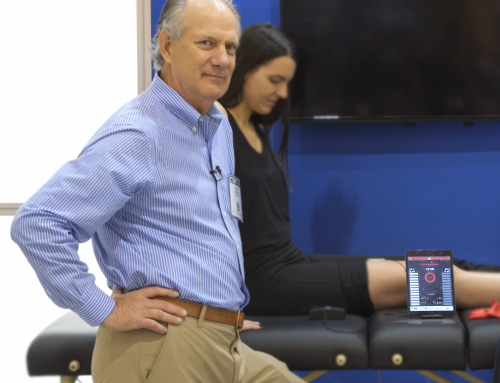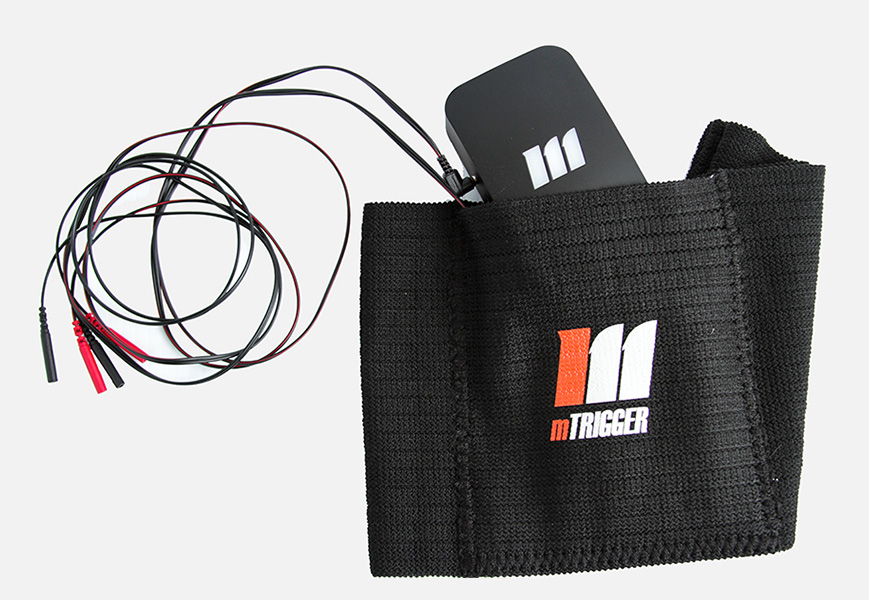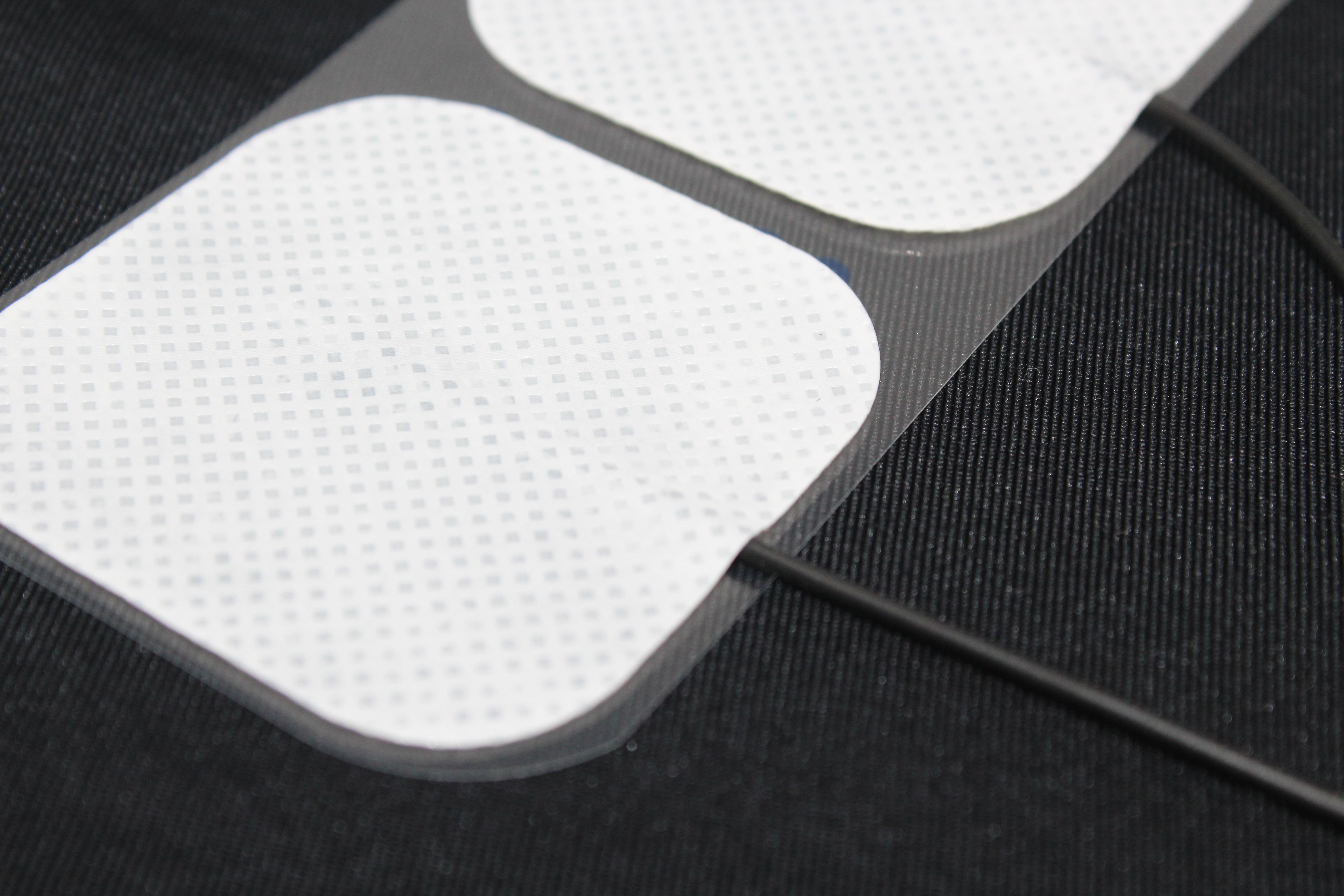Hop testing has long been a gold standard when assessing return to sport readiness following a knee injury. However, the standard “single leg hop”, “triple hop”, and “cross over hop” tests may not provide the relevant information we once believed.
The standard 90% limb symmetry index has been used in the past for determining return to play decisions. Experts have made the point however, that hop testing and limb symmetry index grossly overestimate knee function and readiness.[1]
Background
When hop testing is performed at 6+ months after a knee injury, there is a loss of strength and deconditioning that has occurred on the non-operative limb that needs to be accounted for.[2] Instead, we should compare a pre-surgical hop test on the uninvolved side compared to the injured side 6+ months after surgery to provide a more accurate assessment.[2] None the less, even a passing score on hop testing at 6 months still presents as an independent risk factor for re-injury.[3] This clearly indicates something is missing from our battery of return to sport tests.
Hop tests have recently been criticized for their straight plane movements and lack of ability to sufficiently evaluate performance demands in multiplanar sports.[1] We need to be able to detect the presence of any lasting functional deficits before safely releasing an athlete to play and our tests must be able to assess for this higher level of movement.[1]
Expert Opinion
Recently, ACL expert, researcher, clinician, and mTrigger co-founder Russ Paine discussed his use of a backwards hop test. Russ highlights the significance of the quadriceps muscle for deceleration and overall function of the knee.
Along these same lines, a 2021 study evaluated the ability of eight different hop tests to detect asymmetries between surgical and non-surgical limbs with the addition of more multidirectional movements.[1] Not surprisingly, those with passing >90% LSI on standard hop tests struggled to meet passing criteria for a single leg medial hop and a single leg lateral hop test.[1]
Clinical Application
Since little to no literature exists on normative values for medial, lateral, and backwards hop testing, we used mTrigger biofeedback to break down the single leg medial, lateral, and backwards hopping movements a bit more.
Medial Hop Limb Symmetry Index = 50%
Lateral Hop Limb Symmetry Index = 80.1%
In these videos we can clearly see that despite the athlete passing standard hop testing, a limb symmetry index <90% still exists. Furthermore, the peak landing activation is significantly higher on the uninvolved side, indicating a lack of sufficient protective quad activation and deceleration during landings from a single leg jump. Athlete is well over a year out from surgery.
Reduced quadriceps strength has been highlighted as a reason why only 50-65% of athletes return to their pre- injury level after ACL reconstruction.[1,4] Using a backwards hop really pinpoints the quads and highlights underlying strength deficiencies.
Backward Hop Limb Symmetry Index= 88.4%
Although more research is needed in this area, there is great value in using medial, lateral and backwards hop testing to help assess an athlete’s movement quality, strength, and readiness for safe return to play.
Summary
Despite our best efforts, standardized hop testing has been shown to underestimate an athletes readiness to return to play. The use of medial, lateral, and backwards hopping may prove beneficial for detecting multiplanar deficiencies. With the added use of mTrigger biofeedback, hop testing can further provide information on quad muscle activation capacity and load acceptance ability that can be used as part of a bigger picture when it comes to making return to play decisions. Once deficits are determined, biofeedback can also be used during exercise to improve activation levels, accuracy, and effort to maximize outcomes.
More from Russ Paine
|
Biofeedback for the Knee
|
References
[1] Ebert JR, Preez L Du, Furzer B, et al. Which Hop Tests Can Best Identify Functional Limb Asymmetry in Patients 9-12 Months After Anterior Cruciate Ligament Reconstruction Employing a Hamstrings Tendon Autograft? Int J Sports Phys Ther [Internet]. 2021 [cited 2022 Sep 13];16:393. Available from: /pmc/articles/PMC8016443/.
[2] Wellsandt E, Failla MJ, Snyder-Mackler L. Limb Symmetry Indexes Can Overestimate Knee Function After ACL Injury. J Orthop Sports Phys Ther [Internet]. 2017 [cited 2022 Sep 13];47:334. Available from: /pmc/articles/PMC5483854/.
[3] Cristiani R, Forssblad M, Edman G, et al. Age, time from injury to surgery and quadriceps strength affect the risk of revision surgery after primary ACL reconstruction. Knee Surgery, Sport Traumatol Arthrosc [Internet]. 2021 [cited 2022 Sep 13];29:4154. Available from: /pmc/articles/PMC8595184/.
[4] Van Wyngaarden JJ, Jacobs C, Thompson K, et al. Quadriceps Strength and Kinesiophobia Predict Long-Term Function After ACL Reconstruction: A Cross-Sectional Pilot Study. Sports Health [Internet]. 2021 [cited 2022 Sep 13];13:251. Available from: /pmc/articles/PMC8083148/.









Leave A Comment